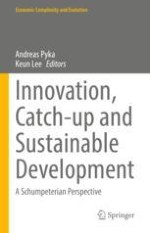2021 | OriginalPaper | Buchkapitel
The Influence of Science and “Industrial Enlightenment” on Steelmaking, 1786–1856
verfasst von : Keiichiro Suenaga
Erschienen in: Innovation, Catch-up and Sustainable Development
Aktivieren Sie unsere intelligente Suche, um passende Fachinhalte oder Patente zu finden.
Wählen Sie Textabschnitte aus um mit Künstlicher Intelligenz passenden Patente zu finden. powered by
Markieren Sie Textabschnitte, um KI-gestützt weitere passende Inhalte zu finden. powered by
